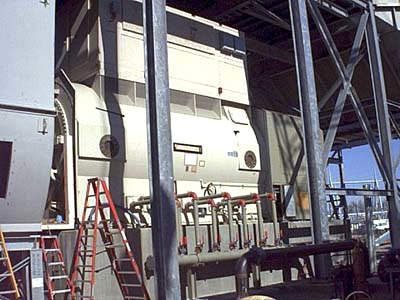When does demand pull inflation occur?
Contents
And ideally you would do this with international data because you could implicitly control for other variables like government policy and culture . Demand-pull inflation can be a good thing for the economy in the short term, but it is something that needs to be carefully monitored. As demand increases, it can lead to higher prices and inflationary pressures that might eventually cripple an economy. It’s important to understand the causes of demand-pull inflation to be able to spot it when it happens. Demand-pull inflation can stimulate the economy and be a sign of high rates of employment from the general population. However, it also causes an increase in prices and can increase borrowing costs.

Demand-pull inflation is the upward pressure on prices that follows a shortage in supply where too much money is chasing too few goods. An increase in the costs of raw materials or labor can contribute to cost-pull inflation. Demand-pull inflation advantages and disadvantages of fiscal policy refers to the increase in the price of a product because of the increase in demand for that product in the market. Therefore, demand-pull inflation is customer-driven inflation. During the time of Inflation, the interest rate should be increased.
As there is more demand for goods and services, production houses try to keep up with the demand, and in the meantime, the prices start to rise. Demand-pull inflation explains rising prices in an economy as the result of increased aggregate demand that surpasses supply. As consumers demand more given limited supply, prices are bid higher.
Demand-Pull Inflation: Definition & Causes
In the midst of rising inflationary trend, firms cannot accurately estimate their costs and revenues. That is, in a situation of unanticipated inflation, a great deal of risk element exists. It is commonly assumed that if inflationary tendencies nurtured by experienced inflation persist in future, people will now save less and consume more.

It causes the cost of living and unemployment rates to rise while it decreases spending power and productivity. In Keynesian economics, an increase in aggregate demand may be caused by a rise in employment, as companies need to hire more people to increase their output. A tight labor market means higher wages, which translates into greater demand. Finally, anticipated inflation may also be costly to the society.
It would also increase investment spending by firms and businesses. In demand pull inflation, Aggregate Demand D is rising too fast, so these contractionary policies would lower the rise, meaning inflation would still occur but at a lower rate. So, workers demand more wages to keep up with the increasing prices. This causes the aggregate supply curve AS to shift from AS0 to AS1. The new point of equilibrium is E2 where price rose to P2 and output declined to Y0.
Table of Contents
A change in demand can be recorded as either an increase or a decrease. Note that in this case there is a shift in the demand curve. When there is an increase in demand, with no change in supply, the demand curve tends to shift rightwards.
- In a boom, growth is above the long-run trend rate, and it is in this situation where we will get demand-pull inflation.
- This may occur because of a scarcity of raw materials, an increase in the cost of labor to produce the raw materials, or an increase in the cost of importing raw materials.
- When iPhones were fairly new, the number of suppliers making these cases was few, which meant the demand often outweighed the supply and people paid more than they might be willing to pay today.
- With almost everyone gainfully employed and borrowing rates at a low, consumer spending on many goods increases beyond the available supply.
When there is more money available to spend, each individual dollar has less purchasing power. For example, if inflation causes a nation’s currency to decline, this can benefit exporters by making their goods more affordable when priced in the currency of foreign nations. Full BioRobert Kelly is managing director of XTS Energy LLC, and has more than three decades of experience as a business executive. He is a professor of economics and has raised more than $4.5 billion in investment capital. Although individual stock prices may fall, investing in a diversified broad market index fund tends to beat inflation and grow overall wealth in the long run.
What is the difference between demand-pull inflation and cost-push inflation?
The cycle continues and results in a hyperinflation scenario. Imagine what happened when there was an outbreak of swine flu in India. Due to the outbreak of swine flu epidemic in India, the government notified a warning that people should wear Breathing Masks to protect them from the infection. As a result, the demand for mask had risen to a very high level, but the supply being limited as the producers of the mask had no anticipation of the swine flu epidemic.
He’s been writing for 10+ years on a variety of financial topics and has been featured on sites like Forbes, Investopedia, The Balance, Yahoo! Finance, USNews, The Week, The Street, Nasdaq.com, and more. These economic policies were introduced in response to a prolonged period of economic stagflation that began under President Gerald Ford in 1976. Suppose, Indian economy is operating at its maximum potential. Prices are stable, resources are fully utilised, everyone who is willing to work is getting the work .
- The central bank of Staples is eager to maintain the growth rate.
- When aggregate demand curve is AD1 the equilibrium is at less than full- employment level where price level OP1 is determined.
- This increase in the aggregate demand is exactly proportional to the increase in the money stock.
- As the demand for a specific product or service rises, the supply available decreases.
When the supply for a good is greater than the demand, it is referred to as a surplus. People who put their money in shares during inflation are expected to gain since the possibility of earning of business profit brightens. Higher profit induces owners of firm to distribute profit among investors or shareholders.
Demand-Pull Inflation vs. Supply-Pull Inflation
Cost-push inflation occurs when prices increase due to increases in production costs, such as raw materials and wages. To what extent price level increases depends upon the elasticity of supply or aggregate output. To counter demand pull inflation, governments, and central banks would have to implement a tight monetary and fiscal policy. Examples include increasing the interest rate or lowering government spending or raising taxes. An increase in the interest rate would make consumers spend less on durable goods and housing.
- As consumers demand more given limited supply, prices are bid higher.
- As inflation is a state of rising prices, deflation may be defined as a state of falling prices but not fall in prices.
- When this occurs it can increase jobs and stimulate the economy but it drives prices of goods up.
- It starts with a decrease in total supply or an increase in the cost of that supply.
An increase in government spending to boost economic activity will lead to increase in interest rate. This happens because, at any given point in time, the economy will have limited saving capacity. When the government increase its spending, it competes with the private sector for these limited saving. In the process, this tend to put upward pressure on the interest rate. The mechanism through which the central banks controls inflation depends on interest rate.
For example, businesses expected higher interest rates and inflation in the 1970s. The expectation that inflation will rise often leads to a rise in inflation. Workers and firms will increase their prices to ‘catch up’ to inflation. One may also argue that inflation creates an air of uncertainty in the minds of business community, particularly when the rate of inflation fluctuates.
How demand-pull inflation occurs
Aggregate supply is the total supply of goods and services produced within an economy at a given overall price level in a given time period. Hyperinflation describes rapid and out-of-control price increases in an economy. In this article, we explore the causes and impact of hyperinflation.
How does demand-pull inflation differ from cost-push inflation?
They state that both the forces operate simultaneously and independently in an inflationary process. Thus, mixed inflation is when change in price level is a result of change in both aggregate demand and aggregate supply functions. The aggregate demand and supply analysis https://1investing.in/ helps in explaining the short run fluctuations in the economic activity around its long run trend. Cost push inflation occurs when there is a decrease in supply of goods and services. This happens when the cost of production increases and pushes the price level.
Demand-pull inflation can be contrasted with cost-push inflation, whereby higher costs of production are passed on to consumers. Inflation is mainly caused by excess demand/ or decline in aggregate supply or output. Former leads to a rightward shift of the aggregate demand curve while the latter causes aggregate supply curve to shift leftward. Former is called demand-pull inflation , and the latter is called cost-push inflation . Before describing the factors, that lead to a rise in aggregate demand and a decline in aggregate supply, we like to explain “demand-pull” and “cost-push” theories of inflation. But they emphasise that when the growth in money supply is greater than the growth in output, the result is excess demand for goods and services which causes rise in prices or demand-pull inflation.
